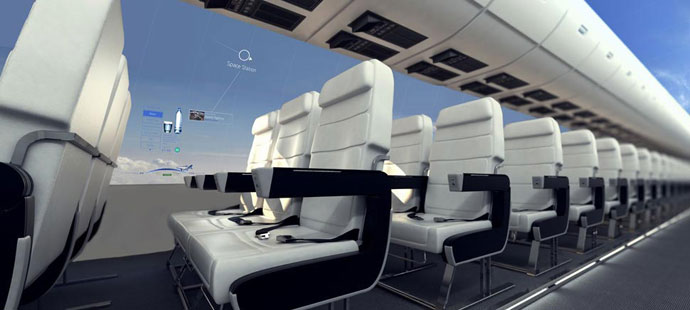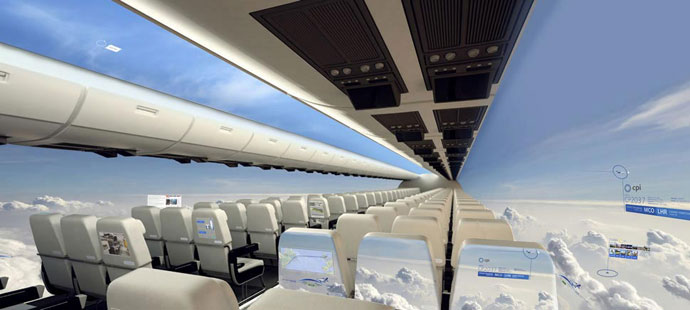Airplanes Of The Future May Have Digital Displays Instead Of Windows
A windowless airplane doesn’t sound very exciting; it sounds kind of like airlines using cost as an excuse to take away yet another basic amenity of air travel — that is, the ability to look out the window. The U.K.-based Centre for Process Innovation is proposing something different, however: video display panels that can cover the entire interior of an aircraft, making it appear that passengers are floating in the sky.
The technology, which CPI plans to develop over the next 10 years, will allow planes to have glowing walls that are actually display screens, transmitting live feeds of panoramic views from around the aircraft as well as information and in-flight services. Large digital seatback screens will function in much the same way, offering passengers digital windows and entertainment systems.
CPI’s new flexible, printed electronic displays can, according to the company, be installed directly onto an aircraft’s fuselage or be printed onto modular panels, allowing manufacturers to choose where the panels will go and whether they will be used for digital displays or lighting.

Centre for Process Innovation
These high-definition displays will present a plethora of benefits that sound almost too good to be true. By removing the clunky windows of current aircraft, fuselages can be made lighter, stronger and thinner, according to CPI. Reducing aircraft weight would reduce fuel consumption, in turn reducing the 750 million tons of carbon dioxide that are emitted by airplanes each year. By reducing fuel consumption, costs would also be reduced for both manufacturers and passengers, and the increased cabin space would mean wider seating.
Passengers would also have quite a view. CPI says that images will be projected from a series of cameras mounted around the outside of the plane, eliminating views of the wings and engines; anyone in any seat will be able to choose what side of the aircraft they’d like to see out of. In addition, the lighting panels will be controllable so that during long journeys, sunsets and sunrises can be adjusted to help passengers better adjust to time zone changes.
The technology to take CPI’s screens into full production doesn’t exist yet, but the company projects that it will be feasible within the next five years.










































